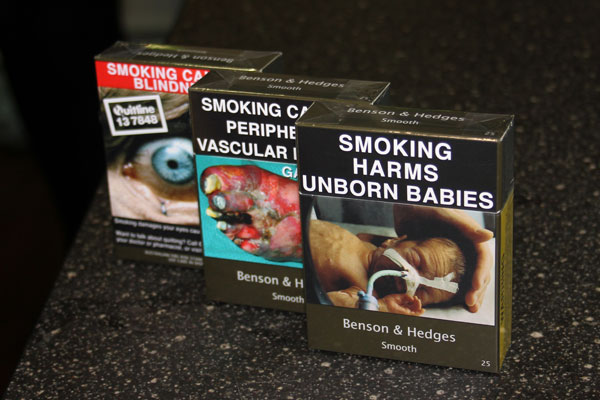Plain packaging not working

Critics contend that plain packaging has done little to reduce smoking rate in Australia.
Fifty-nine percent of Australians believe that standardized tobacco packaging has been ineffective, according to a CanvasU poll commissioned by Japan Tobacco International.
JTI said the recent poll had been conducted to provide understanding about Australians’ views on the country’s standardized-tobacco-packaging policy, five years after its implementation.
The research found that while 59 percent of Australians believe that standardized packaging has been ineffective, 80 percent of them believe the government wouldn’t change or would be reluctant to change a preferred policy even if the evidence were weighted against it.
According to a note posted on JTI’s website, even the Australian government’s data justified such public scepticism. The most recent figures from the Australian Institute of Health and Welfare showed that ‘…while smoking rates have been on a long-term downward trend, for the first time in over two decades, the daily smoking rate did not significantly decline over the most recent three-year period (2013 to 2016)’.
“Unsurprisingly, early data from France and the United Kingdom is pointing in the same direction”, Michiel Reerink, JTI’s global regulatory strategy vice president, was quoted as saying.
JTI said that, according to a new report published by Europe Economics, the implementation of the Tobacco Products Directive (TPD2) and the introduction of standardized packaging requirements in the UK and France, had not had any impact on smoking rates or tobacco sales.
Recent data published by the French public authorities confirmed that, after nine months, the level of tobacco-product distribution to retailers had remained stable.
‘Around the world, anti-tobacco activists and some health authorities are calling for similar experimental policies to be rolled-out on other product categories such as alcohol, sugary drinks and fast food, JTI said. ‘In December 2016, Public Health England published a report calling for plain packaging on alcohol, a topic which has been raised again this month by medical journal The Lancet. In Canada, the Ontario Medical Association has mocked up images of plain packaging on food and drink products.’
JTI added that it was therefore no surprise that CanvasU’s research had found that at least half of Australians thought it was likely that standardized packaging would be introduced on alcohol and food & drink with a high sugar content in the future; or that it was already in place.
In fact, a majority of Australians expected this policy to be just the start of an escalation in lifestyle regulation in the future.
“An increasing number of regulators are looking at extreme tobacco-style regulations on other product categories without considering proper evidence or research into the consequences,” said Reerink. “Brand owners should be worried about this domino-effect as policy-makers won’t stop with tobacco.”